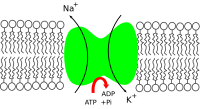
Effects of Tryptophan Along with Sodium Pyruvate and Sodium Thiosulfate on Chlorella vulgaris Growth
Sign Up to like & getrecommendations! Published in 2019 at "Waste and Biomass Valorization"
DOI: 10.1007/s12649-018-00577-7
Abstract: Microalgae could serve as an ideal bioenergy resource for third-generation biofuels because of its endless features. However, in an effort to render it as a commercially viable bioenergy resource, certain improvements that enhance its productivity… read more here.
Keywords: sodium; growth; sodium pyruvate; sodium thiosulfate ... See more keywords

Sodium Pyruvate Nasal Spray Reduces the Severity of Nasal Inflammation and Congestion in Patients with Allergic Rhinitis
Sign Up to like & getrecommendations! Published in 2022 at "Journal of Aerosol Medicine and Pulmonary Drug Delivery"
DOI: 10.1089/jamp.2022.0025
Abstract: Background: As an anti-inflammatory and antioxidant, sodium pyruvate significantly reduces inflammatory cytokines and oxygen radicals such as interleukin (IL) IL-6, IL-8, Monocyte Chemoattractant Protein-1, and hydrogen peroxide. Thus, sodium pyruvate holds promise as a treatment… read more here.
Keywords: nasal inflammation; sodium; sodium pyruvate; nasal spray ... See more keywords

Sodium pyruvate pre‐treatment prevents cell death due to localised, damaging mechanical strains in the context of pressure ulcers
Sign Up to like & getrecommendations! Published in 2019 at "International Wound Journal"
DOI: 10.1111/iwj.13173
Abstract: We demonstrate sodium pyruvate (NaPy) pre‐treatment as a successful approach for pressure ulcer (PU) prevention by averting their aetiological origin—cell‐level damage and death by large, sustained mechanical loads. We evaluated the NaPy pre‐treatment effect on… read more here.
Keywords: death; treatment; sodium pyruvate; cell ... See more keywords

Successful treatment of infantile-onset ACAD9-related cardiomyopathy with a combination of sodium pyruvate, beta-blocker, and coenzyme Q10
Sign Up to like & getrecommendations! Published in 2019 at "Journal of Pediatric Endocrinology and Metabolism"
DOI: 10.1515/jpem-2019-0205
Abstract: Abstract Mitochondrial acyl-CoA dehydrogenase 9 (ACAD9) deficiency is one of the common causes of respiratory chain complex I deficiency, which is characterized by cardiomyopathy, lactic acidemia, and muscle weakness. Infantile cardiomyopathy is the most common… read more here.
Keywords: deficiency; treatment; coenzyme q10; beta blocker ... See more keywords

A Novel Therapeutic Approach With Sodium Pyruvate on Vital Signs, Acid–Base, and Metabolic Disturbances in Rats With a Combined Blast and Hemorrhagic Shock
Sign Up to like & getrecommendations! Published in 2022 at "Frontiers in Neurology"
DOI: 10.3389/fneur.2022.938076
Abstract: Background Blast injuries from improvised explosive devices (IEDs) are known to cause blast traumatic brain injuries (bTBIs), hemorrhagic shock (HS), organ damage, mitochondrial dysfunction, and subsequent free radical production. A pre-citric acid cycle reagent, pyruvate,… read more here.
Keywords: sodium pyruvate; combined blast; shock; injury ... See more keywords